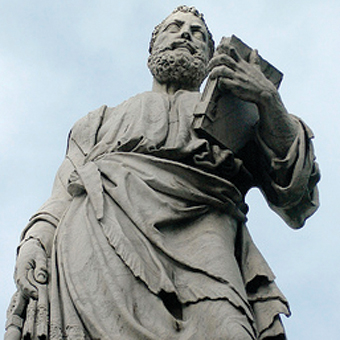Every doctrine or practice familiar to Catholics has a history of its own, and some official expressions of church teaching are quite recent, such as the dogmas of the Immaculate Conception (1854) and Assumption of Mary (1950). That doctrine is slow to become official or may even change has to do with the nature of divine revelation: By definition, it is God’s self-giving, and God cannot be fully captured by any human expression. The growth, change, and expansion of church teaching is often referred to as the “development of doctrine,” an expression employed by English theologian Cardinal John Henry Newman in an 1845 essay.
The impetus for a change or development often arises from the experience of the Christian community, especially when some Christians have responded one way to a problem and some another. The first major dispute in the early church, for example—whether Gentiles must first become Jews before joining the church—arose because of St. Paul’s success in spreading the gospel among non-Jews. It took a gathering in Jerusalem to determine that Gentile Christians were not bound by Jewish law.
Since then church authorities have come together in councils of various types to render judgments on almost every conceivable matter, from clerical celibacy to the relationship between the divinity and humanity in Jesus Christ. Some were local, called to deal with a particular problem. Others have come to be known as “ecumenical” because they gathered a large portion of the bishops of the time; the decisions of the first seven of these gatherings are recognized by the majority of Christians as binding on all the baptized.
As monasteries took central stage in Christian life in the early Middle Ages, the practice and teaching of monks became increasingly important. From monasteries in Ireland came the practice of private confession, later accepted as one of the seven sacraments at the Fourth Lateran Council in 1215. A bitter ninth-century dispute between two monks led to a more specific understanding of what happens to the bread and wine during Mass. Later termed “transubstantiation” and explained by the 13th-century theologian St. Thomas Aquinas, the concept was accepted into church teaching definitively by the Council of Trent in the 16th century.
Since the Reformation, Catholic teaching has tended to rely on the papacy as the final arbiter of authentic development, reflected in the First Vatican Council’s definition of papal infallibility in 1870. But even that was modified by the Second Vatican Council, which placed papal infallibility in relationship to the infallibility of the whole People of God when they speak with one voice on a matter of faith, and of the college of bishops, which shares the charism when it speaks unanimously.
Seen in retrospect, the development of doctrine can seem messy and disorganized, not unlike the conflicts that often have accompanied changes in church teaching. That can be disconcerting, but Cardinal Newman offers comfort: “To live is to change, and to be perfect is to have changed often.”
This article appeared in the June 2010 issue of U.S. Catholic (Vol. 75, No. 6, page 46).
Image: Photo by Meghan Murphy-Gill












Add comment